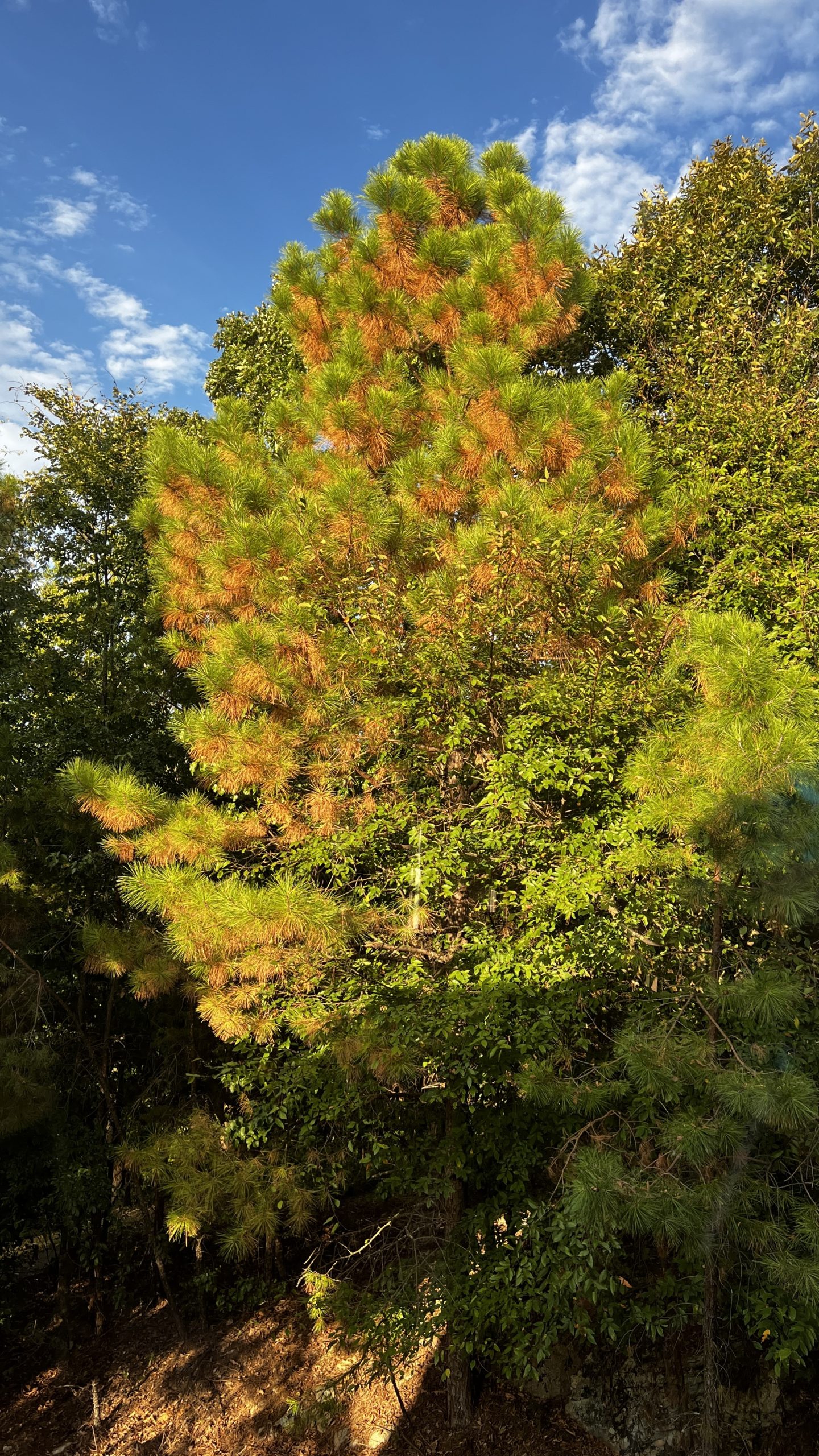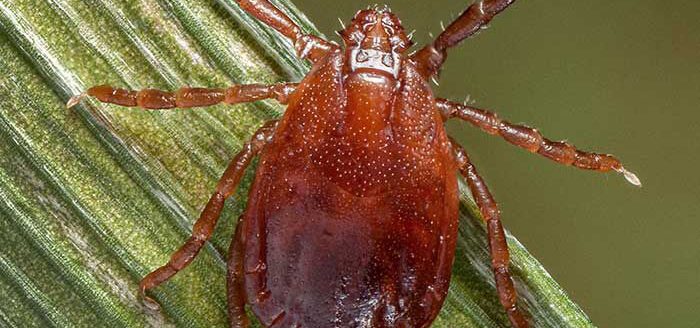PORTLAND, Maine (AP)–A little-known raw material used in the most widely used antiviral flu medicine comes from the fruit of trees native to China. It turns out it also comes from pine trees in Maine’s backyard.
Researchers at the University of Maine at Orono say they’ve found a new and relatively easy way to extract shikimic acid–a key ingredient in the drug Tamiflu–from pine tree needles.
Shikimic acid can be removed from the needles of white pine, red pine and other conifer trees simply by boiling the needles in water, said chemistry professor Ray Fort Jr. Additional testing is needed, and it remains to be seen if there’s demand for the product or if the process can applied commercially in the private sector, he said.
But the extracted acid could be valuable because Tamiflu is the world’s most widely used antiviral drug for treating swine flu, bird flu and seasonal influenza. The major source of shikimic acid now is the star anise, an unusual star-shaped fruit that grows on small trees native to China.
Swiss drug giant Roche Holding AG holds the patent on Tamiflu, which is produced by Roche’s manufacturing partners.
If Fort’s research is succes sful, pine trees could serve as another source of shikimic acid to manufacture Tamiflu while also providing Maine’s forest products industry a new source of revenue. The research has been funded from a variety of sources, including the Maine Technology Institute, the U.S. Department of Agriculture, the National Science Foundation and the university’s chemistry department.
“Our thought is we can probably get shikimic acid a lot cheaper than they’re currently getting it elsewhere because the pine needles are just sitting there,” Fort said. “It may turn out this isn’t economically useful if they are successful in coming up with a large-scale synthesis of their own. That’s the chance you take.”
This isn’t the first attempt at finding alternative sources for shikimic acid.
Five years ago, Biolyse Pharma Corp. in St. Catharines, Ontario, devised a sophisticated chemical process to extract shikimic acid from pine needles. The project came during the avian flu scare in 2005 with the goal of stockpiling the acid in case there was a worldwide pandemic and more Tamiflu had to be manufactured on short notice, said Claude Mercur, whose family owns the company.
When the Canadian government failed to endorse the idea of having Biolyse manufacture Tamiflu in a national emergency, the company contacted Swiss drug giant Roche Holding AG, which holds the patent on Tamiflu, about buying the shikimic acid, Mercur said. But Roche wasn’t interested and Biolyse dropped the project when no other buyers could be found, he said.
Biolyse hasn’t been involved in shikimic acid since, and Mercur is doubtful there is a market for the acid, given the diminished demand for Tamiflu these days. Roche Holding expects 2010 Tamiflu sales to be a little over $1 billion, down from about $3.3 billion in 2009.
It’s also hard to compete with China on price, he said.
“We cannot compete against Chinese costs, especially products produced outside the main population centers,” he said.
According to various scientific studies, strong demand for Tamiflu in recent years put pressure on the supply of shikimic acid, with a shortage of star anise viewed as a major production problem in producing Tamiflu.
Star anise has been used for centuries for a licorice-like flavor in Chinese foods and in liqueurs such as Pernod. But most of the supply these days goes to provide shikimic acid for making Tamiflu.
Roche Holding said in an e-mail that it also uses a synthetic version of shikimic acid to lessen its reliance on star anise. The company said it has an ample supply of Tamiflu for the current flu season.
Scientists have known for decades that virtually all plant life contains shikimic acid, Fort said. But what hasn’t been so clear is how much of the acid was contained in Maine’s pine trees and how easy–or difficult–it was to extract.
The latest research has determined that white and red pines–and spruce and tamarack trees to a lesser extent–store enough of the acid to make it worthwhile to extract, Fort said. It’s as easy as boiling the needles in water, like boiling tea in tea bags he said.
Fort envisions loggers stripping pine needles off harvested tree limbs, boiling them in large containers and filtering out the residue, all while working in the woods. The leftover fluid, containing the shikimic acid, would be further processed at a mill or some other plant and sold on the open market, he said.
Testing so far has taken place in a laboratory and additional large-scale testing is needed before the process is passed on to a private company for commercial development, Fort said. The goal is to eventually make pine needles economically valuable for Maine’s forestry industry.
“We’re looking at maybe one more year in the laboratory,” Fort said.
The research was presented in August at an American Chemical Society national meeting in Boston and reported in the Portland Press Herald. Fort plans to have the results published in a scientific journal.
Other researchers are also looking at ways to utilize new sources to make Tamiflu.
In a study published last fall, scientists wrote that growing demand for Tamiflu has put pressure on the supply of shikimic acid.
“As a result, chemists worldwide, including ourselves, have explored the possibility of using other alternative raw materials for the synthesis of the drug,” the researchers wrote.
At the University of Arkansas, recent studies have looked at extracting shikimic acid from sweetgum trees with the focus of adding value to the trees before they are shipped off to biomass energy plants.
Julie Carrier, a professor who headed the research, thinks shikimic acid could have other commercial applications beyond Tamiflu down the road. For instance, maybe it could be used to kill or inhibit the growth of microorganisms on foods.
“These natural molecules could have a host of other applications,” she said. “We’re in a period of growth in these natural markets, and I’m sure shikimic acid is going to find applications we aren’t even dreaming of right now.”
Fort said he’s aware of other work to come up other sources of shikimic acid.
But he also thinks pine needles could be a cheap supply source because they’re so abundant–Maine is the nation’s most heavily forested state with nearly 90 percent of the land covered by trees–and easy to process.
The price of shikimic acid in recent times has ranged from $135 to $315 per pound, depending on the imminence of a flu outbreak, he said. he hasn’t come up with any cost estimates of shikimic acid from pine needles.
“It’s just harvesting what Mother Nature grows,” he said.




